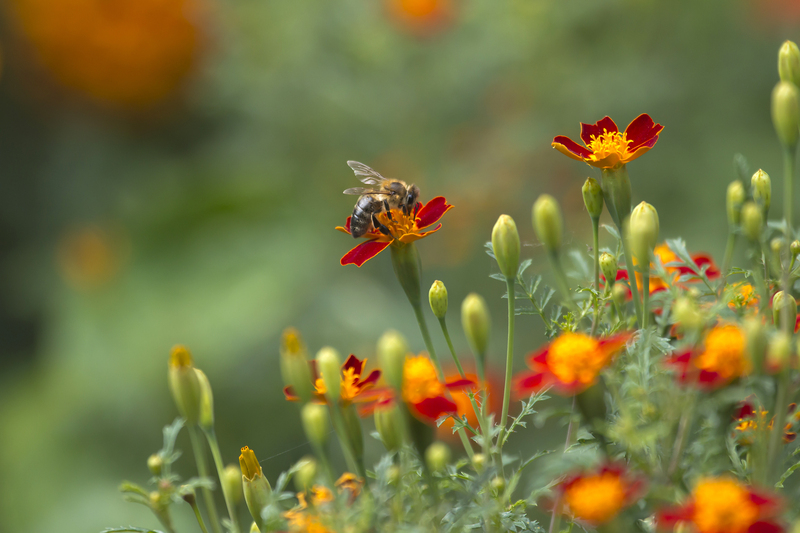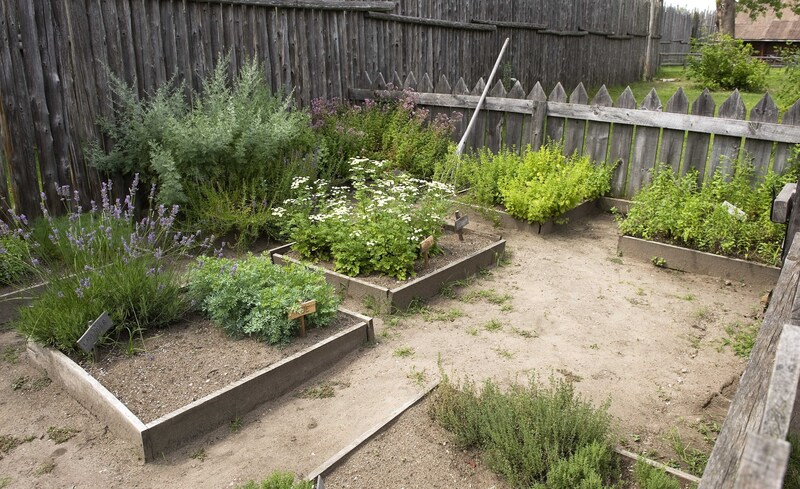Best Practices for Avoiding Lawn Stress in Summer Heat
As temperatures soar and days grow longer, your beautiful green lawn faces unique challenges. Heat stress can quickly turn a lush, vibrant turf into a patchy, brown expanse. If you're looking to protect your grass during extreme heat, it's essential to understand the causes of lawn stress and employ the right strategies. In this comprehensive article, we'll outline the best practices for avoiding lawn stress in summer heat--helping ensure your outdoor space remains resilient, green, and attractive through the hottest months.

Understanding Lawn Stress in Summer
Before diving into actionable tips, let's examine what heat stress actually means for lawns. Lawn stress during summer primarily occurs due to a combination of high temperatures, inadequate water, and increased evaporation rates. This environment makes it difficult for grass roots to access moisture and nutrients, leading to wilting, discoloration, thinning, or even death. Additionally, heat-stressed lawns are more susceptible to pests, weeds, and diseases.
- Common symptoms of summer lawn stress include:
- Dry and brittle grass blades
- Brown or yellow patches
- Footprints that remain visible for long periods
- Thinning or bare spots
- Increased weed growth
Key Best Practices for Avoiding Lawn Stress in Summer Heat
To keep your lawn healthy and minimize damage during summer's peak, apply the following best practices for preventing lawn stress:
1. Water Wisely and Deeply
Irrigation is critical during hot months, but how you water makes all the difference. Overwatering can foster disease, while underwatering leads to dehydration. Follow these guidelines:
- Water Early: Watering in the early morning (between 4 a.m. and 9 a.m.) minimizes evaporation and allows grass to dry before nightfall, reducing disease risk.
- Deep, Infrequent Watering: Provide 1-1.5 inches of water per week, ideally in two deep sessions rather than daily light sprinklings. This encourages deep root growth.
- Avoid Night Watering: Water left on the lawn overnight can promote fungal diseases.
- Check Soil Moisture: Use a soil probe or screwdriver to check that moisture reaches 6-8 inches deep.
- Adjust for Rainfall: If it rains, reduce supplemental watering accordingly.
2. Lawn Mowing Techniques for Summer Survival
Proper mowing supports resilience during summer stress. The right mowing practices reduce water loss, enhance photosynthesis, and protect grass crowns:
- Keep Grass Taller: Set your mower blade higher (generally 3-4 inches for cool-season, and 2-3 inches for warm-season grasses). Taller grass shades soil, retaining moisture and suppressing weeds.
- Follow the One-Third Rule: Never remove more than one-third of the grass blade at each mowing. Cutting too short stresses the plant and exposes roots to harsh sunlight.
- Keep Blades Sharp: Dull mower blades tear, rather than cut, causing ragged edges that lose moisture more quickly.
- Leave Clippings: Grass clippings return nutrients and help retain soil moisture ("grasscycling").
3. Fertilize with Care in Hot Weather
Under summer heat stress, lawns generally do not require heavy fertilization. Too much fertilizer can burn grass and exacerbate dehydration.
- Use Slow-Release Fertilizer: If feeding is necessary, opt for a slow-release, low-nitrogen product and apply sparingly.
- Time Applications: Avoid fertilizing during peak daytime temperatures or drought conditions. Instead, fertilize in late spring or early fall for most grass types.
- Monitor Lawn Needs: Apply only if your turf genuinely needs a boost, indicated by thin growth or pale color.
4. Manage Lawn Traffic
Excessive use of a summer lawn during extreme temperatures--such as sports or garden parties--can cause compaction and stress. Protect your grass by:
- Rotating play and seating areas to prevent persistent wear patterns
- Temporarily limiting trafficked zones after recently seeding, fertilizing, or watering
- Installing stepping stones for frequently used paths
5. Aeration and Soil Health
Compacted soil limits root growth and water penetration, increasing lawn vulnerability in hot weather. Aeration--removing plugs of soil--improves air, water, and nutrient movement.
- Aerate Annually: Plan core aeration for late spring or early fall.
- Topdress with Compost: After aerating, apply a thin layer of organic compost to boost microbial activity and enhance moisture retention.
6. Fight Summer Weeds and Pests
Weakened lawns are prime targets for weeds and insects. Stay vigilant:
- Spot-treat: Deal with weeds as they appear, using selective herbicides only as needed (follow label directions carefully).
- Integrated Pest Management: Monitor for signs of grubs, chinch bugs, or fungal diseases, and use treatment only if damage is evident.
7. Reseeding & Overseeding for Summer Repair
Does your yard already show widespread damage from heat? Address bare patches and thinning proactively:
- Choose Drought-Tolerant Grasses: For overseeding, select varieties designed to survive hot, dry conditions (such as tall fescue or Bermuda grass).
- Seed Properly: Over seed when temperatures cool or just before fall for best results; keep soil consistently moist during germination.
Additional Lawn Care Tips for Beating Summer Heat
Apart from the main best practices for avoiding summer lawn stress, advanced strategies and maintenance tweaks can give your turf the extra resilience to pull through climate extremes.
Mulch Borders and Bedding Plants
Applying a 2-3 inch layer of organic mulch along flower beds and shrubs adjacent to your lawn helps reduce soil temperature fluctuations and retains moisture. This protects not only the plants themselves but minimizes heat reflected back onto the grass.
Calibrate Your Sprinkler System
Uniform water coverage is crucial for healthy turf during dry spells. Check your irrigation system for clogged heads and ensure every zone receives complete, overlapping coverage without runoff.
Install Smart Technology
Consider integrating weather-based timers or soil moisture sensors to optimize irrigation based on real-time conditions. This reduces waste and ensures your grass receives just the right amount of water to minimize lawn stress during summer heat.
Shading Solutions
Planting trees or installing shade sails can lower the ambient temperature of particularly vulnerable areas of your lawn. Even partial afternoon shade can dramatically reduce evaporative stress for grass beneath.
Monitor and Soil Test
Regularly check the health of your lawn and soil. Perform a soil test every couple of years to balance pH and nutrients--adequate potassium enhances drought tolerance.
- Adjust Practices: Soil test results may inform targeted amendments, improving your lawn's overall ability to survive heat and stress.
Special Considerations by Grass Type
Not all grass is created equal. Understanding your turf variety will inform your summer lawn care routine:
- Cool-Season Grasses (Kentucky bluegrass, fescue, ryegrass): More susceptible to summer dormancy. Focus on deep watering and minimize stress. Do not force green growth with excessive fertilizer or water.
- Warm-Season Grasses (Bermuda, zoysia, St. Augustine): Excel in hot climates but still require adequate moisture. They often recover more quickly after drought, but can also brown if underwatered.
Let Lawns Go Dormant--If Necessary
Many grasses, particularly cool-season types, can survive periods of brown dormancy during prolonged heat or drought. This is a natural survival mechanism. If restrictions limit irrigation, simply water enough to keep roots alive (about 1/2 inch every 2-4 weeks), and avoid heavy traffic or fertilizing until conditions improve.
Myths and Mistakes: What Not to Do
To truly avoid summer lawn stress, it's important to dispel common myths and avoid risky shortcuts:
- Myth: "Water every day during heat waves."
- Truth: Daily, shallow watering leads to shallow roots and increased stress. Deep, infrequent watering is always best.
- Myth: "Cut your grass short to reduce mowing."
- Truth: Cutting too low removes protective leaf area and exposes roots, making lawns more prone to heat damage.
- Overfertilizing: Avoid the temptation to "green up" a fading lawn with lots of fertilizer--it can do more harm than good in hot weather.
- Panic Watering: Watering during peak afternoon heat can result in waste, scorch blades, and boost fungal risk.
Eco-Friendly Practices for Summer Lawn Resilience
Incorporating sustainable lawn care practices provides added benefits for both your yard and the environment:
- Choose Native or Drought-Resistant Grasses: These varieties require less water and maintenance during prolonged periods of high heat.
- Let Clippings Lie: As mentioned, leaving grass clippings on the lawn saves water and fertilizes naturally.
- Minimize Chemical Usage: Opt for organic pest controls and fertilize carefully to protect beneficial soil microbes.
- Reduce Lawn Size: Replace underperforming or hard-to-maintain zones with groundcovers, mulched beds, or native plants.

Quick Reference: Emergency Steps for a Stressed Lawn
- Stop fertilizing during heat stress
- Decrease mowing frequency and raise mowing height
- Water deeply, in the early morning, as your local regulations allow
- Avoid heavy foot traffic
- Postpone seeding or other nonessential activities until temperatures moderate
Conclusion: Summer Lawn Care Is Proactive, Not Reactive
By understanding the threats posed by summer heat stress on lawns and implementing these best practices, you can keep your grass strong, green, and inviting throughout the challenging months. Regular monitoring, proper irrigation, mindful mowing, and avoidance of common pitfalls are your keys to success.
_Remember, a resilient lawn doesn't just happen--it's the result of consistent, thoughtful care._ Use these tips for avoiding lawn stress in summer heat, and enjoy a beautiful, thriving yard season after season!
Want more expert guidance? Bookmark this guide and share your own summer lawn care strategies in the comments!